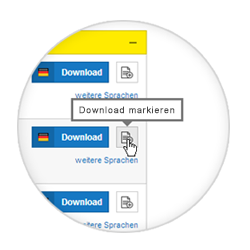7 good reasons for using pressure transmitters with ceramic measuring cell
The temperature shock-resistant ceramic CERTEC® measuring cell offers new application possibilities.
Temperature or thermal shock resistance is a recurring issue for many pressure transmitters with ceramic measuring cells, but not for VEGA's CERTEC® measuring cell − its special compensation capability provides an effective antidote to this particular vulnerability. An additional temperature sensor circuit on the rear of the diaphragm can detect even the slightest change in temperature and has thus solved this problem. This temperature value can even be used as a second output. But the ceramic-capacitive CERTEC® measuring cell, manufactured from special sapphire ceramic, can do much more: it is one of the most robust and resilient pressure measuring cells ever made.
In short: When the loads are enormous and the demands on the measuring cell are high, there are 7 good reasons for using pressure transmitters with ceramic measuring cells.
1. Abrasion resistant
From demanding production techniques, like slurry containing metallic debris or sand-laden media: whenever superior resistance to chemicals or extreme temperatures or pressures is expected from the deployed measurement technology, CERTEC® ceramic is the only choice, as it handles these conditions with ease.
Even strong cleaning agents or mechanical cleaning with a brush have no effect on the measuring cell.
2. Minimal drift = high long-term stability
Drift is a phenomenon that slowly creeps into pressure measuring systems. In pressure transmitters with metallic measuring cells, so-called long-term drift is a common occurrence, due to ageing of the material. The thin metal diaphragm fatigues after a certain period of use and no longer returns exactly to the original zero point – and starts to 'drift' farther away over time. The user then has to carry out a drift compensation in the form of a recalibration.
Ceramic CERTEC® measuring cells, on the other hand, operate practically drift free. The hardness and limited but precise flexibility and range of motion of the ceramic material means that they exhibit virtually no material fatigue or drift. For that reason, the self-monitoring ceramic measuring cells lengthen the recalibration cycles considerably.
3. Oil free
Pressure transmitters with ceramic CERTEC® measuring cell are designed to avoid such risks entirely. Here, pressure acts directly on the sensing diaphragm, so there is no need for transmission oil. This technology thus fulfils the demand for oil-free processes, and completely eliminates the risk of entire batches getting contaminated. Also when it comes to zero point shift, users are always on the safe side: where there is no oil, no air can get trapped in the system, which can cause drift.
4. Compatibility for many process media
5. High overload resistance
Ceramic measuring cells easily handle extreme load changes, achieving up to 200 times the overload resistance of metallic cells. This is mainly due to the design of the transmitter. A typical measuring cell consists of a diaphragm and a ceramic body. If extremely high pressure is applied, the ceramic diaphragm simply stops against the larger base body. The result is an outstanding overload capacity.
6. Small measuring ranges
With ceramic cells, even very small pressure changes of only a few millibars are reliably detected.
Ceramic CERTEC® measuring cells do not have this problem: they can easily handle small measuring ranges and since they do not require transmission oil, they are extremely compact and can be mounted with small process fittings.
7. No hydrogen diffusion
The situation is completely different with ceramic measuring cells: even hydrogen cannot diffuse through them and negatively influence their service life. Their superiority in terms of hydrogen permeability can thus be added to the list of advantages of ceramic measuring cells.
Conclusion
Ceramic pressure transmitters are made of one of the world's most stable, resistant materials and come with 7 convincing arguments for their use: abrasion-resistant, virtually drift-free, no filling oil, compatible with many process media, long-term stability, overload-resistant, suitable for very small measuring ranges and, last but not least, superior in terms of hydrogen permeability. In any case, they open up countless ideal areas of application for users.
Products
We need your consent
This content is provided by an external provider. If you activate the content, personal data may be processed and cookies set.
Export this article
Download as PDFShare this article
Comments ({{comments.length}})
{{getCommentAuthor(comment, "Anonymous")}} {{comment.timestamp | date : "dd.MM.yyyy HH:mm" }}
{{comment.comment}}







